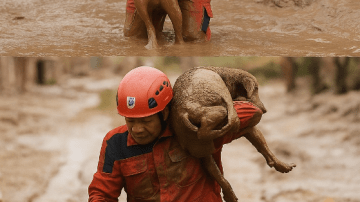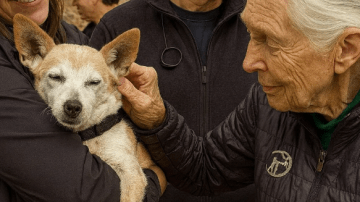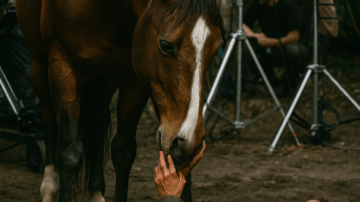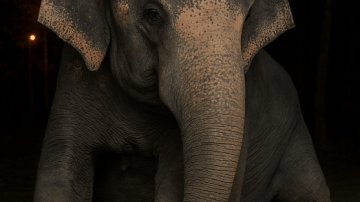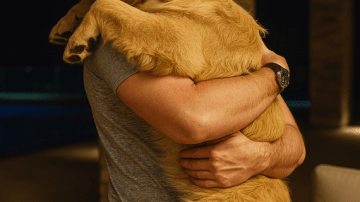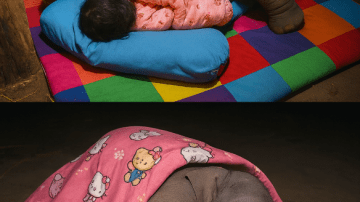He was found trembling beside the tracks.
Both of his fragile legs had been ripped away by a passing train.
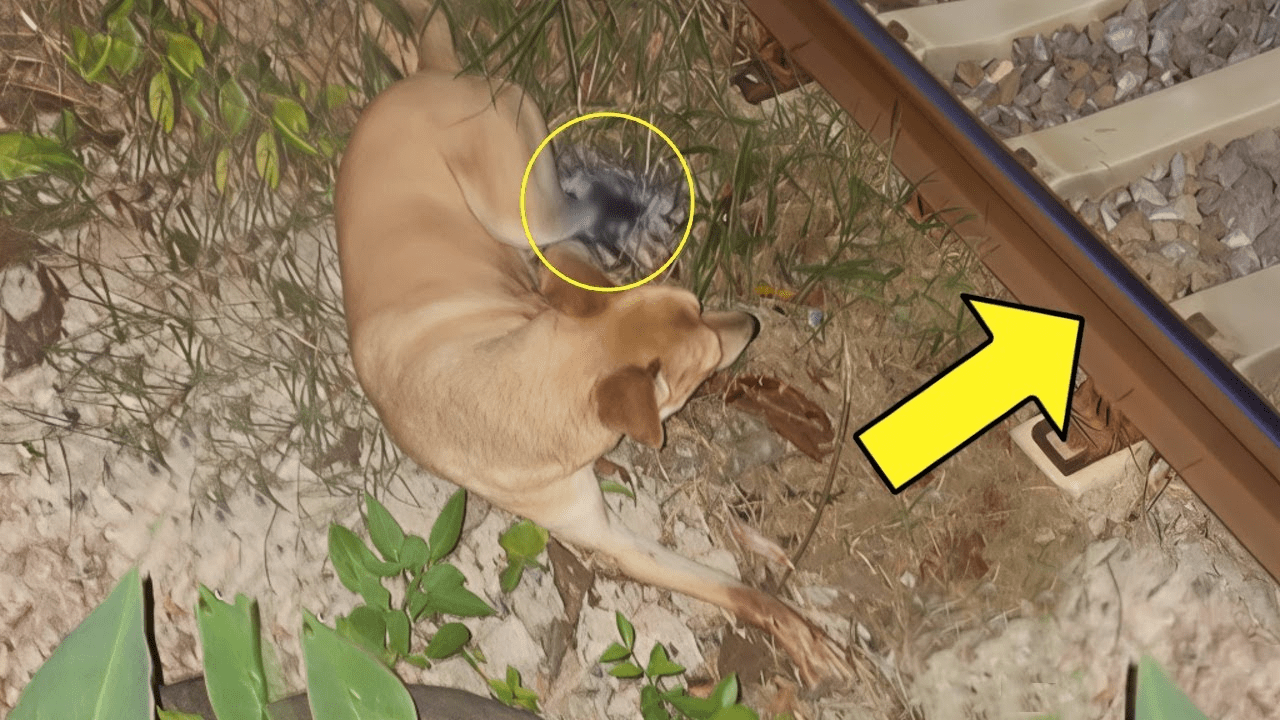
His cries for help echoed into the air, but no one stepped forward.
People stood nearby, whispering that he was beyond saving. Some muttered that the only “mercy” left for him was euthanasia.
But Puddin didn’t cry out because he wanted to die.
He cried because he wanted to live.
The First Fight for Life
When we rushed him to the hospital, his body was in shock. He had lost too much blood. His kidneys were struggling. His life was hanging by the thinnest thread.
The medical team worked urgently. They gave him blood transfusions, IV fluids, and pain relief. They did everything possible to stabilize him, to give him even the smallest chance of survival.
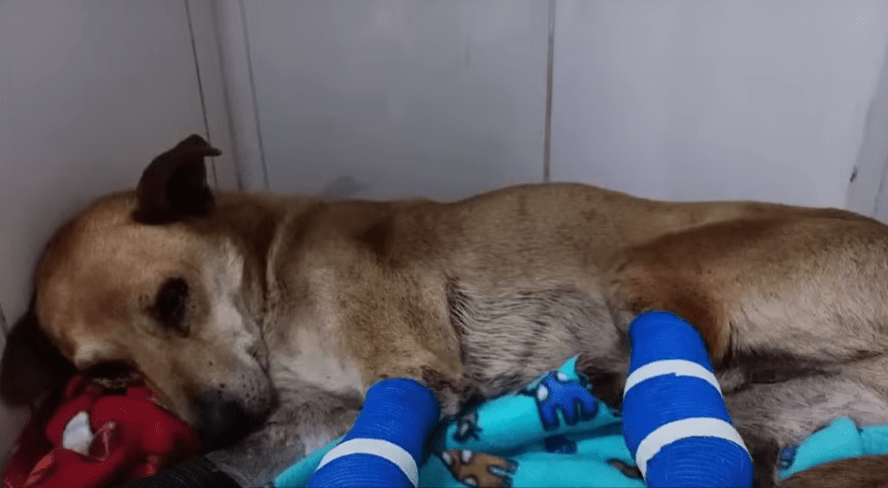
And then we learned something that shattered us even more.
Puddin’s injuries were not an accident.
He hadn’t simply wandered onto the tracks. He had been tied up and left there, deliberately abandoned in harm’s way. His suffering wasn’t fate. It was cruelty.
Knowing this made his will to survive even more powerful.
Preparing for Surgery
The first 48 hours were critical. Every moment counted. He needed strength—enough to endure the major surgery ahead.
We sat beside him, whispering encouragement, gently stroking his head as he rested. His breathing was shallow, but steady. Despite everything, there was determination in his eyes.
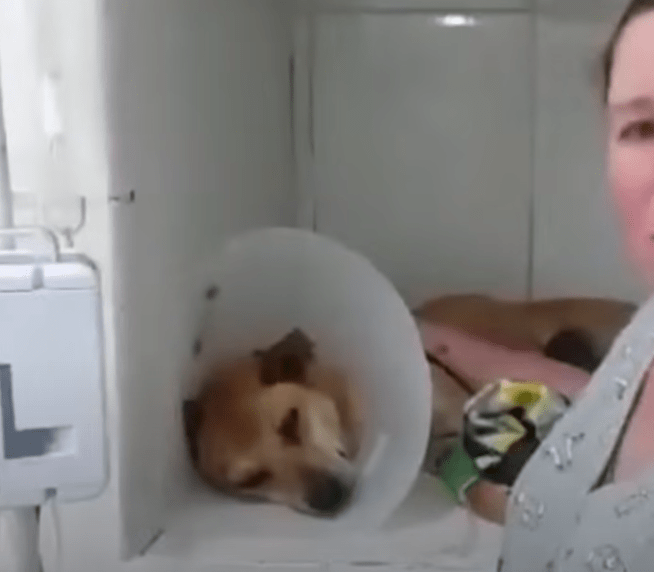
When the day came, the surgeons carefully removed the remaining dead tissue. It was delicate work, but they succeeded.
For the first time since the accident, Puddin was pain-free.
The endless agony that had consumed his every moment finally ended. He rested in peace, not because his life was over—but because his suffering was.
The Long Road to Recovery
Surgery was only the beginning. The next step was preparing Puddin for prosthetics.
That meant nutrition. Rehabilitation. Countless therapy sessions to rebuild muscle, to strengthen his immune system, to help him adapt to the body he now had.
It was grueling work. Every day required patience, persistence, and love. But with each session, Puddin grew stronger. Each small victory—standing with support, moving his body, wagging his tail—proved he hadn’t given up.
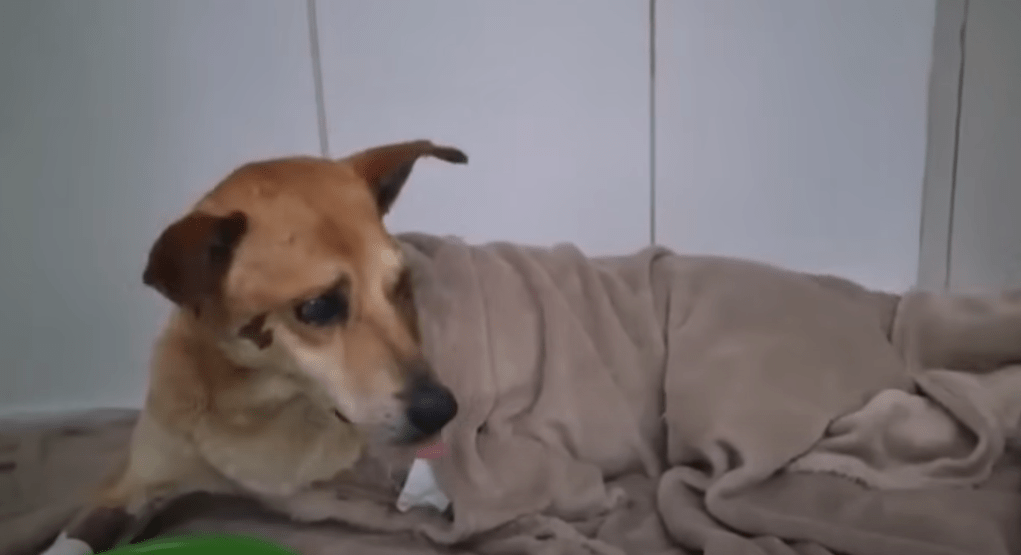
To Those Who Doubted
Many people questioned our decision.
They said it was cruel to keep him alive.
They said a dog missing two legs would never have a good life.
They said the money spent on surgery, treatment, and prosthetics could have saved dozens of “healthier” dogs.
Some believed euthanasia would have been kinder.
But we disagreed.
When we arrived that day, Puddin was not lying there waiting to die.
He was crying, whining, pleading for help. He wanted to live. He wanted to be saved.
How could we ignore that?
A life is not measured by perfection. It is measured by the will to fight, the capacity to love, and the chance to be loved in return.
Puddin deserved that chance.
The Transformation
Weeks passed. Then months.
Slowly, his body healed. He adjusted. He learned how to balance, how to move, how to live with joy again. Despite losing both legs, despite blindness in one eye, his spirit never dimmed.
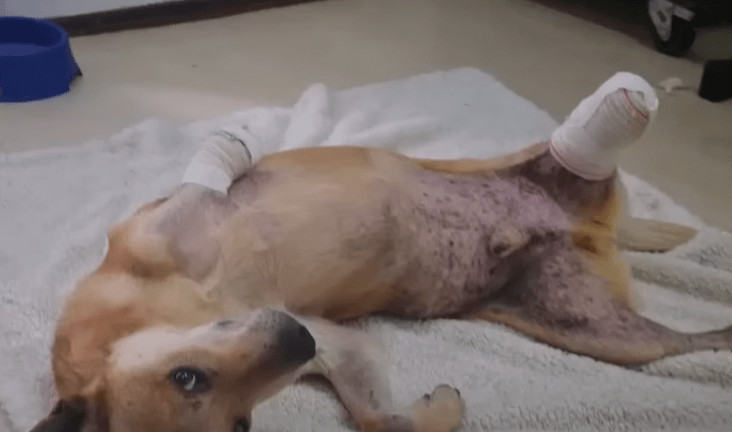
He greets us every day with playful barks and a wagging tail.
He loves his meals, enjoys his therapy, and soaks up every ounce of affection we give.
He is no longer the broken dog left to die on the tracks.
He is Puddin—a survivor, a fighter, and a living reminder that every life matters.
Why We Rescue
People often ask why we do this work. Why we exhaust ourselves, spend sleepless nights, and pour resources into dogs like Puddin.
The answer is simple: because they are worth it.
Every cry for help, every wag of the tail, every pair of eyes that look at us with hope—this is our “why.”
Puddin’s story proves it.
From abandoned and mutilated to cherished and loved, his journey is a testament to resilience and compassion.
He didn’t give up on life.
So we couldn’t give up on him.
And now, every bark, every joyful moment, every day that he lives free from pain—
that is proof that love wins.

